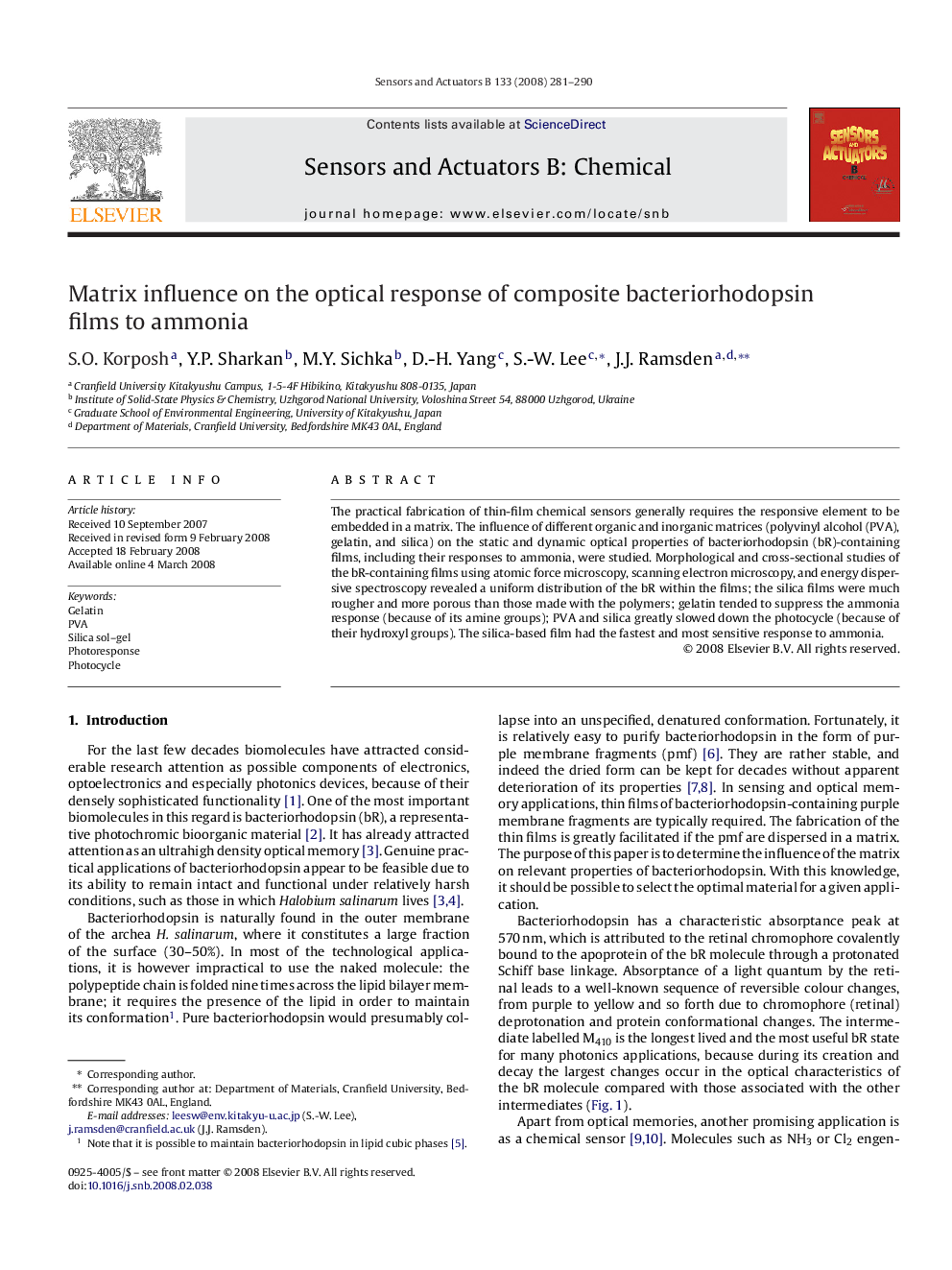| Article ID | Journal | Published Year | Pages | File Type |
|---|---|---|---|---|
| 743743 | Sensors and Actuators B: Chemical | 2008 | 10 Pages |
The practical fabrication of thin-film chemical sensors generally requires the responsive element to be embedded in a matrix. The influence of different organic and inorganic matrices (polyvinyl alcohol (PVA), gelatin, and silica) on the static and dynamic optical properties of bacteriorhodopsin (bR)-containing films, including their responses to ammonia, were studied. Morphological and cross-sectional studies of the bR-containing films using atomic force microscopy, scanning electron microscopy, and energy dispersive spectroscopy revealed a uniform distribution of the bR within the films; the silica films were much rougher and more porous than those made with the polymers; gelatin tended to suppress the ammonia response (because of its amine groups); PVA and silica greatly slowed down the photocycle (because of their hydroxyl groups). The silica-based film had the fastest and most sensitive response to ammonia.
